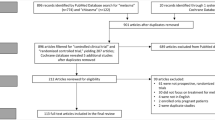Abstract
Background and Objectives
This study aimed to determine the efficacy and safety of fluocinolone acetonide, hydroquinone, and tretinoin (FAHT) cream for the treatment of moderate and severe facial melasma. The primary objective was assessment of clinical efficacy, instrumental measured efficacy, and integral therapeutic efficacy at the end of weeks 4 and 8.
Methods
A total of 233 subjects were randomly allocated (1:1 ratio) to receive topically administered FAHT cream (n = 117) or placebo (n = 116) once nightly for 8 weeks. Observed side effects were documented throughout.
Results
In the per protocol set (PPS; those subjects who met all requirements of the protocol), the integral therapeutic efficacy rate of FAHT cream on moderate and severe melasma was 68.57 % (vs. placebo, 0.94 %), the clinical effective rate of FAHT cream was 74.29 % (vs. placebo, 0.94 %), and the instrumental measure efficacy of FAHT cream was 71.43 % (vs. placebo, 6.60 %). The difference in efficacy between the two groups was statistically significant (p < 0.001). In the full analysis set (FAS; the PPS and those subjects who were lost to follow-up but received at least one study treatment), the integral therapeutic efficacy rate of FAHT cream was 64.60 % (vs. placebo, 0.88 %), the clinical effective rate of FAHT cream was 69.91 % (vs. placebo, 0.88 %), and the instrumental measure efficacy of FAHT cream was 69.03 % (vs. placebo, 7.08 %). The difference in efficacy between the two groups was statistically significant (p < 0.001). Of 113 subjects in the FAHT group, 34 (30.1 %) reported adverse effects. Most of the pathological adverse effects were mild and resolved with either continuous treatment or discontinuation. Of 113 subjects in the placebo group, three (2.6 %) reported mild adverse effects. No severe adverse effects or other abnormal clinical results were associated with the study treatment.
Conclusion
FAHT cream is efficacious, well tolerated, and has a high margin of safety for the treatment of moderate and severe melasma in the Chinese population.

Similar content being viewed by others
References
Kauvar AN. The evolution of melasma therapy: targeting melanosomes using low-fluence Q-switched neodymium-doped yttrium aluminium garnet lasers. Semin Cutan Med Surg. 2012;31(2):126–32.
Gupta AK, Gover MD, Nouri K, Taylor S. The treatment of melasma: a review of clinical trials. J Am Acad Dermatol. 2006;55(6):1048–65.
Grimes PE. Melasma: etiologic and therapeutic considerations. Arch Dermatol. 1995;131(12):1453–7.
Vachiramon V, Suchonwanit P, Thadanipon K. Melasma in men. J Cosmet Dermatol. 2012;11(2):151–7.
Sivayathorn DA. Melasma in orientals. Clin Drug Invest. 1995;10(2 Suppl):34–40.
Ortonne JP, Arellano I, Berneburg M, Cestari T, Chan H, Grimes P, et al. A global survey of the role of ultraviolet radiation and hormonal influences in the development of melasma. J Eur Acad Dermatol Venereol. 2009;23(11):1254–62.
Goh CL, Dlova CN. A retrospective study on the clinical presentation and treatment outcome of melasma in a tertiary dermatological referral centre in Singapore. Singap Med J. 1999;40(7):455–8.
Balkrishnan R, Kelly AP, McMichael A, Torok H. Improved quality of life with effective treatment of facial melasma: the pigment trial. J Drugs Dermatol. 2004;3(4):377–81.
Kligman AM, Willis I. A new formula for depigmenting human skin. Arch Dermatol. 1975;111(1):40–8.
Fitzpatrick TB. The validity and practicality of sun-reactive skin types I through VI. Arch Dermatol. 1988;124(6):869–71.
Taylor SC, Torok H, Jones T, Lowe N, Rich P, Tschen E, et al. Efficacy and safety of a new triple-combination agent for the treatment of facial melasma. Cutis. 2003;72(1):67–72.
Torok HM, Jones T, Rich P, Smith S, Tschen E. Hydroquinone 4 %, tretinoin 0.05 %, fluocinolone acetonide 0.01 %: a safe and efficacious 12-month treatment for melasma. Cutis. 2005;75(1):57–62.
Torok H, Taylor S, Baumann L, Jones T, Wieder J, Lowe N, et al. A large 12-month extension study of an 8-week trial to evaluate the safety and efficacy of triple combination (TC) cream in melasma patients previously treated with TC cream or one of its dyads. J Drugs Dermatol. 2005;4(5):592–7.
The Pigmentation Disease Division, Committee of Skin and Venereal Disease, China Society of Integrated Traditional Chinese and Western Medicine. The diagnostic and treatment criteria of melasma and leukoderma. Edition 2010 [in Chinese]. Chin J Dermatol. 2010;43(6):373.
Chan R, Park KC, Lee MH, Lee ES, Chang SE, Leow YH, et al. A randomized controlled trial of the efficacy and safety of a fixed triple combination (fluocinolone acetonide 0.01 %, hydroquinone 4 %, tretinoin 0.05 %) compared with hydroquinone 4 % cream in Asian patients with moderate to severe melasma. Br J Dermatol. 2008;159(3):697–703.
Hexsel D, Lacerda DA, Cavallante AS, Machado Filho CA, Kadi LL, Ayres EL, et al. Epidemiology of melasma in Brazilian patients: a multicenter study. Int J Dermatol. 2014;53(4):440–4.
Acknowledgments
All authors participated in the conception, design, and implementation of the trials, and were involved in the interpretation of analyzed data and the decision to submit for publication.
Conflict of interest
Zijian Gong, Wei Lai, Guang Zhao, Xuemin Wang, Min Zheng, Li Li, Qingqi Yang, Yuping Dang, Lunfei Liu, and Ying Zou have no conflicts of interest to declare.
Funding
Zhejiang Rishengchang Pharmaceutical Co., Ltd was the sponsor of this study and supplied the study drug and the placebo.
Ethical approval
All procedures performed in studies involving human participants were in accordance with the ethical standards of the institutional and/or national research committee as well as the 1964 Helsinki Declaration and its later amendments or comparable ethical standards.
Author information
Authors and Affiliations
Corresponding authors
Additional information
China Food and Drug Administration (CFDA) Trial Registration Number: 2008L01344.
Z. Gong and W. Lai contributed equally to this article.
Electronic supplementary material
Below is the link to the electronic supplementary material.
Rights and permissions
About this article
Cite this article
Gong, Z., Lai, W., Zhao, G. et al. Efficacy and Safety of Fluocinolone Acetonide, Hydroquinone, and Tretinoin Cream in Chinese Patients with Melasma: A Randomized, Double-Blind, Placebo-Controlled, Multicenter, Parallel-Group Study. Clin Drug Investig 35, 385–395 (2015). https://doi.org/10.1007/s40261-015-0292-8
Published:
Issue Date:
DOI: https://doi.org/10.1007/s40261-015-0292-8




